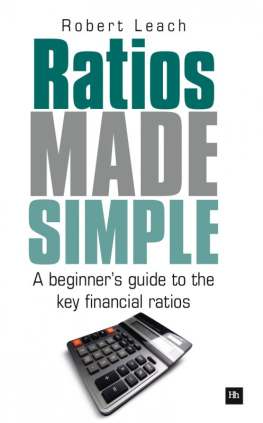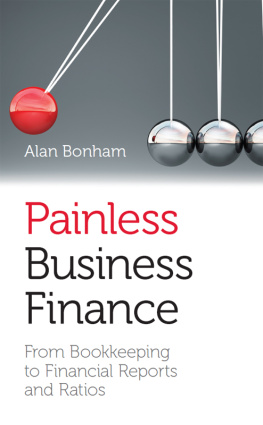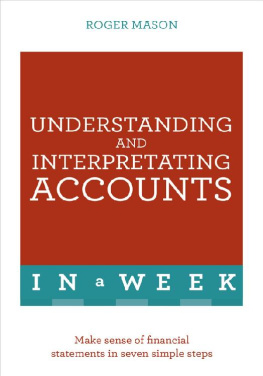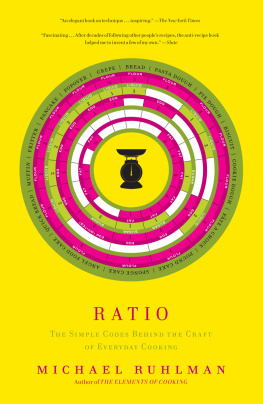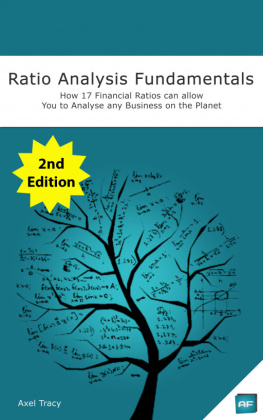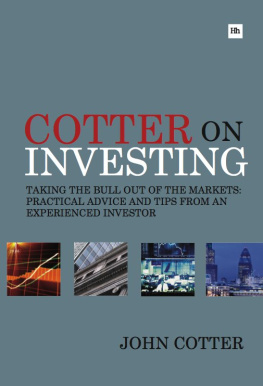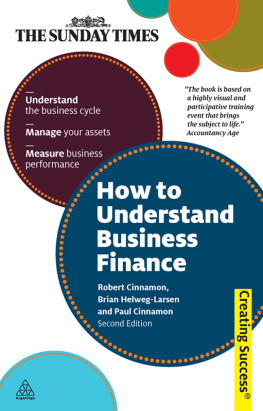Robert Leach - Ratios Made Simple: A Beginners Guide to the Key Financial Ratios
Here you can read online Robert Leach - Ratios Made Simple: A Beginners Guide to the Key Financial Ratios full text of the book (entire story) in english for free. Download pdf and epub, get meaning, cover and reviews about this ebook. year: 2010, publisher: Harriman House, genre: Business. Description of the work, (preface) as well as reviews are available. Best literature library LitArk.com created for fans of good reading and offers a wide selection of genres:
Romance novel
Science fiction
Adventure
Detective
Science
History
Home and family
Prose
Art
Politics
Computer
Non-fiction
Religion
Business
Children
Humor
Choose a favorite category and find really read worthwhile books. Enjoy immersion in the world of imagination, feel the emotions of the characters or learn something new for yourself, make an fascinating discovery.
- Book:Ratios Made Simple: A Beginners Guide to the Key Financial Ratios
- Author:
- Publisher:Harriman House
- Genre:
- Year:2010
- Rating:3 / 5
- Favourites:Add to favourites
- Your mark:
Ratios Made Simple: A Beginners Guide to the Key Financial Ratios: summary, description and annotation
We offer to read an annotation, description, summary or preface (depends on what the author of the book "Ratios Made Simple: A Beginners Guide to the Key Financial Ratios" wrote himself). If you haven't found the necessary information about the book — write in the comments, we will try to find it.
Ratios provide an extremely effective method of understanding company accounts. At their most basic this usually involves taking one figure from the published accounts and dividing it by another - however, this seemingly simple process can reveal an enormous amount about both the nature and performance of a company.
Ratios Made Simple looks at ratios from the perspective of an investor, providing a toolkit for investors to use to accurately analyse a company from its accounts. This book is divided into nine chapters, with each chapter looking at a different aspect of potential concern to an investor:
1. Profitability Ratios
2. Investment Ratios
3. Dividend Cover
4. Margins
5. Gearing
6. Solvency Ratios
7. Efficiency Ratios
8. Policy Ratios
9. Volatility
For each ratio, financial expert Robert Leach provides a detailed definition, explains how it works, describes its use. Investors are also given a simple explanation of how to calculate each ratio, what the ratio means and how the investor should apply the answers in making investment decisions.
This book provides the investor with an essential guide to the use of these powerful analytical tools - tools that should form a vital part of an investors decision-making process.
Robert Leach: author's other books
Who wrote Ratios Made Simple: A Beginners Guide to the Key Financial Ratios? Find out the surname, the name of the author of the book and a list of all author's works by series.

